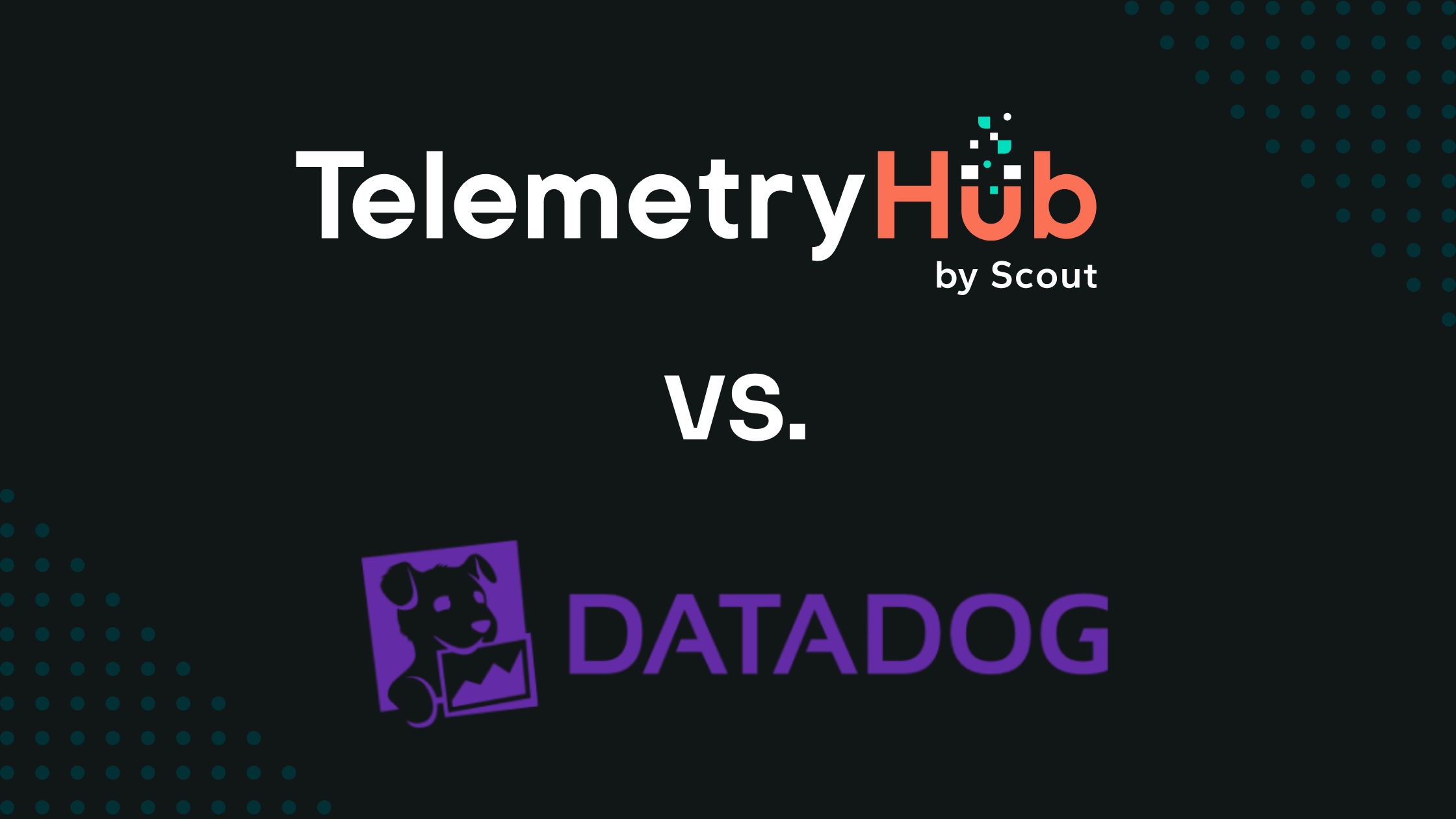TelemetryHub vs. DataDog
When deciding on the most effective monitoring and logging solution for your development team, there are some important questions you need to ask that go beyond just brand recognition.
While some brands are widely recognized, they may not always be the best fit for your organization’s needs. Enter TelemetryHub, an affordable and reliable end-to-end application monitoring tool that is a better Datadog alternative worth exploring. When deciding between these two tools there are some key factors that need to be considered in the DevOps tool buying process.
How long can you wait to monitor your stack?
With Datadog, deployments take anywhere from weeks to months, but with TelemetryHub, you can report your first data in a few days. TelemetryHub is a more focused tool with a lot less feature bloat. As a result, deployments are faster with fewer barriers to monitoring your whole stack.
How committed are you to Open Standards?
Are you really committed to open standards? It matters! By using open standards, organizations can standardize the tools used throughout the development and operations lifecycle. Doing so makes it easier to develop and maintain applications across multiple platforms and frameworks. TelemetryHub is fundamentally committed to the OpenTelemetry project and the promise of what open standards can achieve for your team.
There are a number of benefits to open standards which come up in the sections below, but one I want to emphasize is the benefits to your team’s professional development. After all, it’s only of limited value to say you’re a DataDog expert. But open standards mean you have a basis for experience on any open monitoring stack. Your team will thank you for having portable knowledge!
Who decides what technology you are going to monitor?
DataDog is a huge set of DevOps tools, there’s no doubt about that. But their closed approach to monitoring is implicitly limited: they have to decide what they’re going to spend time supporting, and every other technology that might need monitoring is going to be left in the cold. If you want to monitor IoT devices like the Raspberry Pi Pico, there’s no way to get DataDog working in that environment.
TelemetryHub, with its Open Telemetry support, can support any environment that can send data to an Open Telemetry Collector. Here’s an example of IoT data getting sent to OpenTelemetry from the Azure team.
Can you afford gaps in your tracing?
Traces are an integral part of monitoring production software. Those little sequences show what services were involved in a request, how long the steps took, and what processes were kicked off by the requests.
Traces are critical for understanding the behavior of software, identifying choke points or errors in production, and diagnosing performance issues. They also provide detailed insights into how a system behaves over time and can help identify trends or patterns in usage. By analyzing distributed tracing data, engineers, and developers can understand what’s happening under the hood and determine where optimizations are needed.
And at TelemetryHub, we support all spans that can be sent by an OpenTelemetry collector. That means as long as your service is on the network, it can send time spans that will show up within TelemetryHub.
What are the chances you might want to change providers?
We all know the risks of vendor lock-in. With DataDog, you’re going to be stuck paying their rates for at least a year, no matter what your contract states because the cost of changing away from them is so high.
DataDog has said that they’re also interested in open standards, but progress has been slow, and it’s perhaps more accurate to say ‘we are happy to take data in open standards, but we won’t let it out.’ This Vendor lock-in is a real risk using closed application monitoring tools. Changing providers often means a complete re-do of your deployment process, possibly including downtime while you deploy new monitoring tools. With TelemetryHub, all it will take to migrate is changing the endpoint in your OpenTelemetry Collector.
Who needs access to your monitoring data?
This seems like such a simple question: who needs monitoring data, engineers, of course! But when you’re paying per seat, as you do with DataDog, you may find that, when you’re in a budget crunch, you might find that there are one or two engineers you leave off the list. After all, they don’t work directly with operations, or uptime, so we can just cut them off. But what happens when you’re working together on a problem and find one engineer can’t see the data?
The result is a negative feedback loop: fewer and fewer people see the data, meaning the work of operations gets more and more siloed. Not very DevOps is it?
In an ideal world, knowledge about your production stack would go to as many people as possible, with leaders, solutions architects, and support all looking at you monitoring. That’s what TelemetryHub, with its unlimited users, makes possible.
TelemetryHub: the easy-to-use, affordable monitoring solution
TelemetryHub is an excellent Datadog alternative for companies that want to monitor their IT infrastructure but do not want to spend an excessive amount of money doing so. TelemetryHub’s affordable and straightforward pricing and extensive feature set enable development teams to only pay for the data they want to investigate.
If you’re looking for a powerful and cost-effective way to monitor all your applications regardless of language or framework, TelemetryHub is the perfect solution. With its customizable metrics, reports, alerting system, and pre-built reports, TelemetryHub provides a comprehensive set of features that will help you gain insights into your data without breaking the bank.
Try TelemetryHub today and see how it can help you optimize your IT infrastructure.

